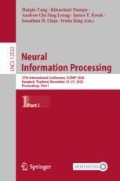Abstract
U-net deep neural network has shown good performances in medical image segmentation analysis. Most of the existing works are a single use of upsampling algorithm or deconvolution algorithm in the expansion path, but they are not opposites. In this paper, we proposed a U-net network optimization strategy, in order to use the available annotation samples more effectively. One deconvolution layer and upsampling output layer were added in the splicing process of the high-resolution features in the contraction path, and then the obtained “feature map” was combined with the high-resolution features in the contraction path in the way that broaden the channel. The training data used in the experiment is the pathological section image of prostate tumor. The average Dice scores for models based on our optimization strategy improve from 0.749 to 0.813. It proves that the deconvolution algorithm can extract feature information different from the upsampling algorithm, and the complementarity can achieve a better data enhancement effect.
Access this chapter
Tax calculation will be finalised at checkout
Purchases are for personal use only
References
Siegel, R.L., Miller, K.D., Jemal, A.: Cancer statistics. CA Cancer J. Clin. 68(1), 7–30 (2018)
Itakura, K., Hosoi, F.: Background and foreground segmentation in plant images with active contour model and plant image classification using transfer learning. Eco Eng. 30, 81–85 (2018)
Yu, L., Yang, X., Chen, H., Qin, J., Heng, P.A.: Volumetric convnets with mixed residual connections for automated prostate segmentation from 3D MR images, p. 66C72 (2017)
Tian, Z., Liu, L., Fei, B.: A supervoxel-based segmentation method for prostateMR images. In: Ourselin, S., Styner, M.A. (eds.) Medical Imaging 2015: Image Processing, vol. 9413, pp. 321–327. SPIE, Bellingham (2015). International Society for Optics and Photonics
Guo, Y., Gao, Y., Shen, D.: Deformable MR prostate segmentation via deep feature learning and sparse patch matching. IEEE Trans. Med. Imaging 35(4), 1077–1089 (2016)
Clark, T., Wong, A., Haider, M.A., Khalvati, F.: Fully deep convolutional neural networks for segmentation of the prostate gland in diffusion-weighted MR images. In: International Conference Image Analysis and Recognition, pp. 97–104 (2017)
Clark, T., Wong, A., Haider, M.A., Khalvati, F.: Fully deep convolutional neural networks for segmentation of the prostate gland in diffusion-weighted MR images. In: Karray, F., Campilho, A., Cheriet, F. (eds.) ICIAR 2017. LNCS, vol. 10317, pp. 97–104. Springer, Cham (2017). https://doi.org/10.1007/978-3-319-59876-5_12
He, H., Yang, D., Wang, S.: Road segmentation of cross-modal remote sensing images using deep segmentation network and transfer learning. Ind. Robot Int. J. 46, 384–390 (2019)
Ronneberger, O., Fischer, P., Brox, T.: U-Net: convolutional networks for biomedical image segmentation. In: Navab, N., Hornegger, J., Wells, W.M., Frangi, A.F. (eds.) MICCAI 2015. LNCS, vol. 9351, pp. 234–241. Springer, Cham (2015). https://doi.org/10.1007/978-3-319-24574-4_28
Kamnitsas, K.: Efficient multi-scale 3D CNN with fully connected CRF for accurate brain lesion segmentation. Med. Image Anal. 36, 61–78 (2017)
Ghafoorian, M.: Non-uniform patch sampling with deep convolutional neural networks for white matter hyperintensity segmentation. In: IEEE 2016 IEEE 13th International Symposium on Biomedical Imaging, pp. 1414–1417 (2016)
Brosch, T., Tang, L.Y., Yoo, Y., Li, D.K., Traboulsee, A., Tam, R.: Deep 3D convolutional encoder networks with shortcuts for multiscale feature integration applied to multiple sclerosis lesion segmentation. IEEE Trans. Med. Imaging 35(5), 1229–1239 (2016)
Li, X., Chen, H., Qi, X., Dou, Q., Fu, C.W., Heng, P.A.: H-denseunet: hybrid densely connected UNET for liver and tumor segmentation from CT volumes. IEEE Trans. Med. Imaging 37(12), 2663–2674 (2018)
Chang, Y., Song, B., Jung, C., Huang, L.: Automatic segmentation and cardiopathy classification in cardiac mri images based on deep neural networks. In: IEEE International Conference on Acoustics, Speech and Signal Processing (ICASSP), pp. 1020–1024 (2018)
Jing, L., Xiong, S., Shihong, W.: An improved bilinear interpolation algorithm of converting standard-definition television images to high-definition television images. In: 2009 WASE International Conference on Information Engineering. IEEE (2009)
Ioffe, S., Szegedy, C.: Batch normalization: Accelerating deep network training by reducing internal covariate shift. arXiv: Learning (2015)
Mercier, Q., Poirion, F., Désidéri, J.A.: A stochastic multiple gradient descent algorithm. Eur. J. Oper. Res. 271(3), 808–817 (2018). S0377221718304831
Hinton, G.E., Srivastava, N., Krizhevsky, A., Sutskever, I., Salakhutdinov, R.R.: Improving neural networks by preventing co-adaptation of feature detectors. arXiv: Neural and Evolutionary Computing (2012)
Long, J., Shelhamer, E., Darrell, T.: Fully convolutional networks for semantic segmentation. IEEE Trans. Pattern Anal. Mach. Intell. 39(4), 640–651 (2015)
Acknowledgment
This work was supported by the National Natural Science Foundation of China (61703302) and partially supported by Shenzhen Science and Technology Foundation (JCYJ20170816093943197).
Author information
Authors and Affiliations
Corresponding authors
Editor information
Editors and Affiliations
Rights and permissions
Copyright information
© 2020 Springer Nature Switzerland AG
About this paper
Cite this paper
Li, S., Xu, J., Chen, R. (2020). U-Net Neural Network Optimization Method Based on Deconvolution Algorithm. In: Yang, H., Pasupa, K., Leung, A.CS., Kwok, J.T., Chan, J.H., King, I. (eds) Neural Information Processing. ICONIP 2020. Lecture Notes in Computer Science(), vol 12532. Springer, Cham. https://doi.org/10.1007/978-3-030-63830-6_50
Download citation
DOI: https://doi.org/10.1007/978-3-030-63830-6_50
Published:
Publisher Name: Springer, Cham
Print ISBN: 978-3-030-63829-0
Online ISBN: 978-3-030-63830-6
eBook Packages: Computer ScienceComputer Science (R0)

